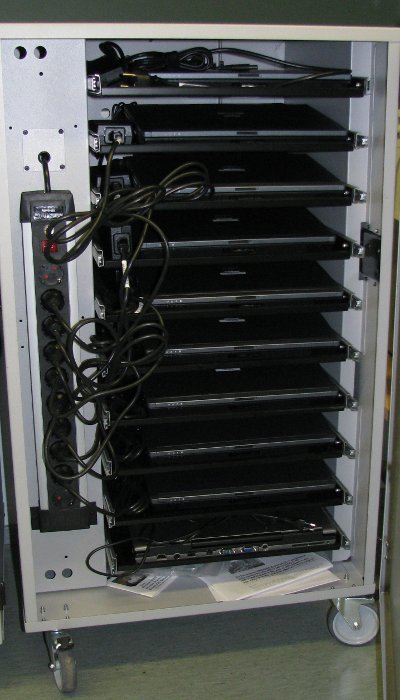
Laptops are now getting to be the norm when buying a new computer for home usage and also we here at Opinsys are getting a lot of questions about laptops and how to run linux on them. Although the schools' ltsp environments are running great, thin clients are not the solution for every problem.
There are a million pedagogical uses for laptops and as I'm not an educator myself, I won't even try to list all of them. As I've been hearing about possible uses and wishes, I've been trying to think of technical solutions to the needs. Lately it seems like most important axis for school laptops seems to be along personal-shared.
More specifically this means:
1. Personal laptops that are usually given to teachers (and in some cases to pupils) to be carried around and used also at home
2. Shared laptops that are handed out to pupils for a single class and then collected again at the end of the class. Pupils may end up using a different laptop every single time they use them.
Personal laptops are what we are all used to having at home. One user, one laptop. The laptop travels mainly between home and school and occassionally elsewhere. All the user's files are on it and they get synchronised with the file servers occassionally. As the laptop gets carried around, all possible connection methods are used - wired, wi-fi, 3g, bluetooth, you name it. Some of the networks are more hostile than others, but certainly one has to be prepared to face constant attacks.
The shared laptops are something completely different. Many times they are stored in a locked cabinet or a laptop cart and handed out to pupils just for a single class. Sometimes twenty laptops are used in the same classroom, sometimes pupils are roaming around doing groupwork. As all users have their files stored on the servers in their personal home directory, robust network connectivity is critical. Also logging in using personal username and password requires some kind of network connectivity before logging in. Network is the school's wireless or fixed lan. If users are used to having certain desktop on ltsp thin clients, it certainly makes sense to have the same desktop available on the laptops. Here the emphasis is on how to access network resources as effectively as possible and how to make sure that everyone can access his or her own information.
A lot has been done in recent years to get laptops working better with linux, but there are still quite a few problems getting shared laptops to work as nicely as ltsp thin clients do. The technical requirements or problems are not new - easy to deploy, easy to access personal information, easy and reliable network access - but each laptop having five new users a day just makes all the problems more visible. Time to start hacking, I'd say.
